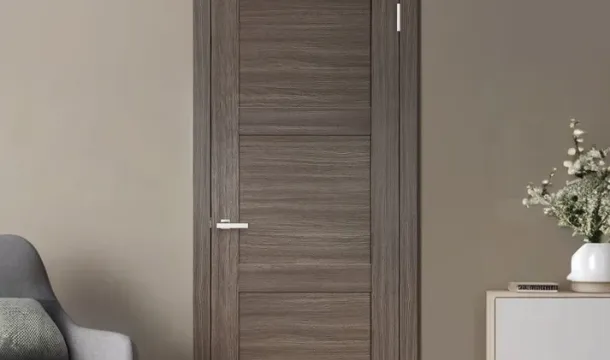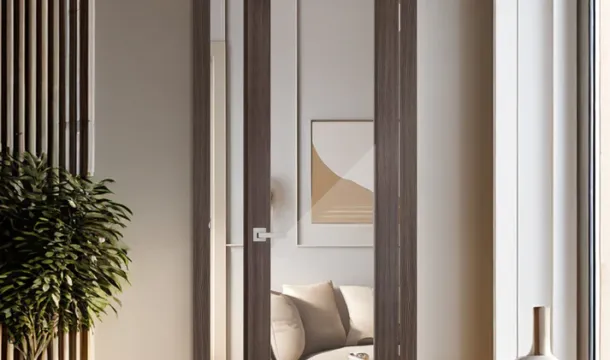Key Trends Influencing the Future Design of Interior Doors
Popular Articles
- Choosing the Perfect Interior Doors for Your Canadian Home
- A Complete Guide to Choosing Interior Doors for Canadian Homes
- The Challenges of Painting Interior Doors
- Understanding Interior Doors and Their Role in Your Home
- The Perfect Blend of Reliability and Design: Interior Doors with Italian "Sandwich" Technology
Sustainability drives material choices, with reclaimed wood, recycled metals, and low-VOC finishes gaining preference. Selecting components that reduce environmental impact without compromising durability ensures doors meet both aesthetic and ecological standards.
Automation enhances daily convenienceintegrating sensor-based mechanisms and app-controlled locking systems transforms doors from static barriers into intelligent access points. Such technology supports seamless interaction while maintaining security and privacy.
Design minimalism emphasizes clean lines and subtle hardware, promoting spatial harmony and adaptability. Combining simplicity with functionality, modern door styles prioritize unobtrusive profiles that complement diverse interior schemes.
The infusion of advanced materials, including thermally insulated composites and antimicrobial surfaces, addresses energy efficiency and hygiene concerns prevalent in contemporary environments. These innovations contribute to healthier, more comfortable living spaces.
Smart integration extends beyond automationembedding IoT connectivity allows doors to communicate with home systems for personalized settings, usage analytics, and predictive maintenance alerts. This level of interactivity redefines user experience through proactive innovation.
Smart Technology Integration Methods
Incorporate embedded sensors and wireless connectivity directly into door frames to enable seamless automation and remote control. Opt for low-energy Bluetooth or Zigbee modules to maintain sustainability while enhancing functionality.
Utilize modular smart locks with customizable access settings, allowing homeowners to tailor security through smartphone apps or biometric verification. This customization aligns with minimalist aesthetics by eliminating bulky hardware.
Automation and Voice Control
Integrate voice-activated openers compatible with popular home assistants for hands-free operation. Combining motion detectors with silent electric actuators ensures smooth, noise-free transitions that complement innovative design principles.
Data-Driven Usage and Maintenance
Implement IoT-enabled monitoring systems within doors to track usage patterns and predict maintenance needs, reducing downtime and extending lifespan. This approach merges innovation with sustainable practices by optimizing resource allocation.
Smart technology integration in door solutions should balance cutting-edge automation with understated minimalism, ensuring each component contributes to both performance and visual harmony without compromising environmental responsibility.
Sustainable Materials Impact Choices
Prioritize reclaimed wood, bamboo, and recycled metal when selecting materials for doors to enhance environmental responsibility without sacrificing customization or functionality. These options support minimalist aesthetics while enabling innovative design solutions.
Consider the following practical material choices:
- Reclaimed Wood: Offers unique grain patterns and durability; pairs well with automation features due to its stable structure.
- Bamboo: Fast-growing and strong, ideal for sleek, minimalistic panels that integrate smart technology effortlessly.
- Recycled Metal Frames: Provide structural integrity and modern appeal; compatible with automated sliding or pivot mechanisms.
- Cork Panels: Enhance sound insulation and sustainability while maintaining lightweight construction suited for smart hardware.
Integrating these materials requires collaboration between designers and technologists to balance innovation with practicality. For example, customizing door thickness or finishes can optimize the compatibility of eco-friendly materials with embedded sensors or automation controls.
Material Selection Guidelines
- Assess lifecycle impact: Choose materials verified by certifications like FSC or Cradle to Cradle to ensure responsible sourcing and recyclability.
- Match material properties to door function: Use denser sustainable woods for high-traffic areas requiring durability; lighter composites suit automated designs needing smooth operation.
- Leverage modular design principles: Facilitate easy replacement of worn parts made from sustainable components without full door replacement, supporting long-term resource efficiency.
The intersection of sustainability with smart functionality opens pathways for doors that not only minimize ecological footprint but also elevate user experience through seamless automation and tailored technology integration. Focusing on material innovation fosters both aesthetic refinement and practical performance aligned with modern living environments.
Space-Saving Door Mechanisms
Opt for sliding or folding door systems to maximize spatial efficiency without compromising minimalism and functionality. Sliding doors mounted on top-hung rails eliminate floor tracks, reducing maintenance and enhancing smooth operation through advanced automation technology. For tighter spaces, accordion-style folding doors offer customizable panel widths and materials, blending innovation with sustainable options like bamboo or recycled composites.
Integrating concealed pivot hinges allows doors to swing within their frame footprint, optimizing room layouts while maintaining sleek aesthetics. These mechanisms support varied customization in finishes and textures, aligning with both contemporary and classic interiors. Utilizing lightweight yet durable materials such as aluminum alloys paired with sound-insulating cores ensures longevity alongside design flexibility.
Incorporate smart sensors to automate space-saving doors, enabling hands-free access that complements modern living environments focused on comfort and efficiency. Combining automation with thoughtfully engineered hardware enhances daily usability while reducing mechanical wear. Designers should prioritize systems that balance technological integration with ease of manual override to ensure reliability.
Modular door units that adapt to fluctuating spatial demands promote multifunctional areas by transforming partitions into open zones swiftly. This approach supports sustainability goals by extending the lifecycle of interior components through versatile reconfiguration instead of replacement. Ultimately, selecting innovative space-saving mechanisms rooted in quality materials drives a harmonious blend of minimalism, practicality, and enduring style.
Popular Articles
- Choosing the Perfect Interior Doors for Your Canadian Home
- A Complete Guide to Choosing Interior Doors for Canadian Homes
- The Challenges of Painting Interior Doors
- Understanding Interior Doors and Their Role in Your Home
- The Perfect Blend of Reliability and Design: Interior Doors with Italian "Sandwich" Technology

Choosing the Perfect Interior Doors for Your Canadian Home

A Complete Guide to Choosing Interior Doors for Canadian Homes
